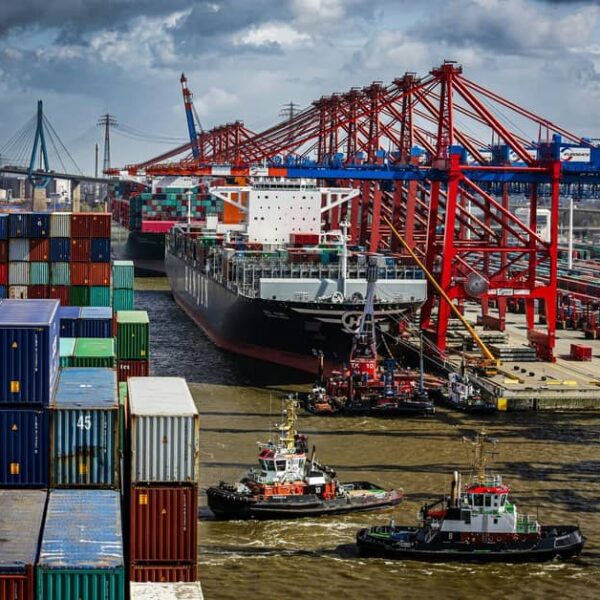Chaos at the Port
A massive section of the Francis Scott Key Bridge in Baltimore collapsed early Tuesday morning after a container ship rammed into it. The incident triggered a frantic search-and-rescue operation and brought operations at one of the busiest ports on the U.S. East Coast to a screeching halt. Eyewitnesses reported a deafening crash followed by a plume of debris as the bridge gave way under the impact of the vessel.
A Crippling Blow
The Port of Baltimore announced that it was closed to all inbound and outbound vessel traffic shortly after the collision. While truck operations within the port are still ongoing, the bridge collapse has effectively cut off the port’s access to the Chesapeake Bay and shipping lanes, raising concerns about the duration of this critical terminal’s closure. Authorities are scrambling to assess the extent of the damage and develop contingency plans to mitigate the economic impact.
Navigating the Chaos
Authorities have advised against using Interstate 695, a vital route for Baltimore’s commuters and freight movement, following the collapse. Alternate routes for trucks bypassing the Key Bridge include tunnels on Interstates 895 and 95 under Baltimore Harbor or using Interstate 695 on the west side of the city. However, these detours are likely to cause significant delays and congestion in the already busy metropolitan area.
A Harrowing Rescue Mission
The water depth where the bridge collapsed is approximately 50 feet, complicating search-and-rescue efforts. The U.S. Coast Guard and dive teams are currently scouring the area for survivors, with the Baltimore fire chief citing the additional challenges posed by the water’s strong currents. Initial reports suggest multiple casualties, and the race to locate survivors is critical, with water temperatures around 47°F (8°C) adding to the urgency. Rescue workers are battling against the clock to extract any trapped individuals before hypothermia sets in.
A Ripple Effect
The incident has far-reaching implications for freight transportation, particularly as the Easter holiday weekend approaches. The Port of Baltimore, known for handling a large volume of imports and exports, now faces immediate operational hurdles that could disrupt supply chains. Retailers and manufacturers relying on goods transiting through the port may experience delays or shortages, potentially impacting consumer markets.
A Shift in Dynamics
Some industry experts suggest that this incident could make West Coast ports like Long Beach and Los Angeles more attractive, as shippers seek to avoid potential disruptions on the East Coast. With the threat of shipping delays in the Red Sea and Suez Canal, and now a major port effectively blocked, the dynamics of port choice could shift, at least temporarily. Rerouting cargo to alternative ports could alleviate some strain but may also lead to capacity issues and bottlenecks elsewhere.
As authorities focus on rescue operations and assess the full extent of the disruption, the impact on commerce and traffic remains uncertain. However, one thing is clear: the ripple effects of this catastrophic bridge collapse will be felt far beyond the waters of Baltimore, potentially reverberating through the global supply chain network.
By leveraging their expertise and resources, Lading Logistics aims to provide efficient and reliable international shipping and logistics solutions for their clients.



